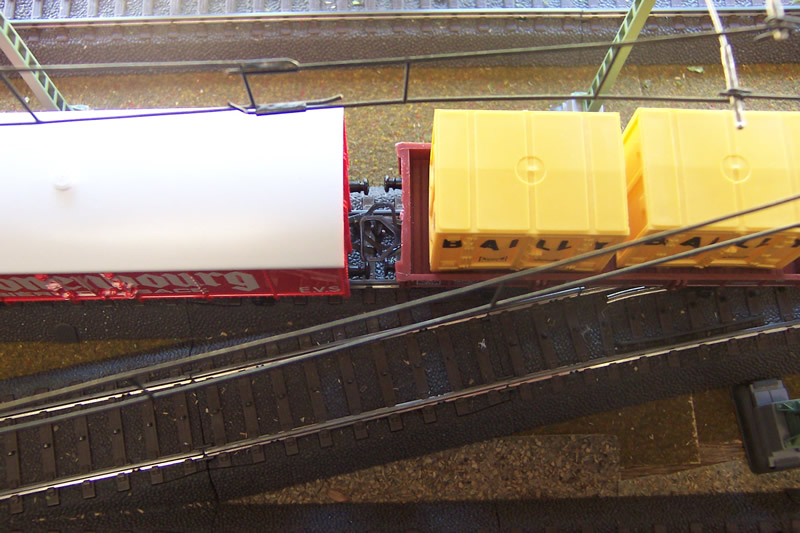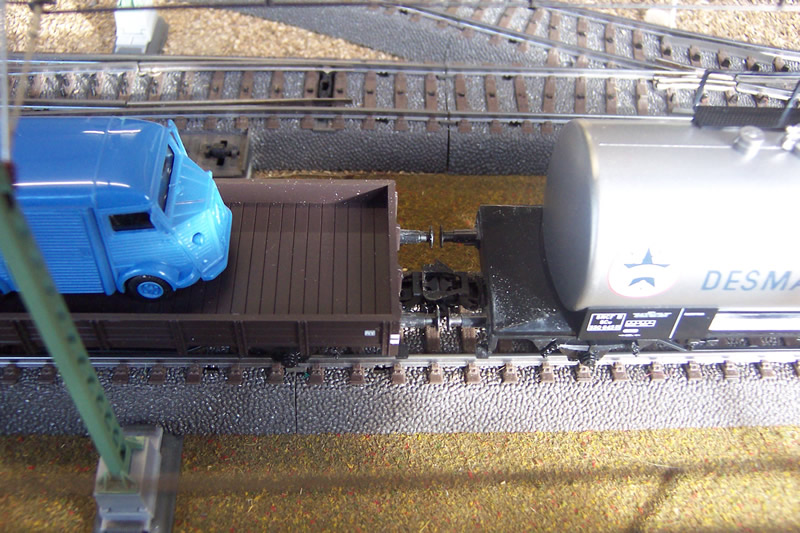Hi,
I would like to question the validity of the kinematic close coupling system (kurzkuppling) as offered by the model manufacturers in Europe.
The Kadee coupler system in North America, does not have a kinematic close coupler system. Why is that?. Well North American rolling stock has
no buffers. It is the scale reproduction of the buffers on European stock, that created the need for the kinematic coupler. In this, the coupler distance between bodies expands on curves. In models without kinematic couplers, the buffers might interlock in the curve, and as the train exited the curve, one or both adjacent wagons would come off the tracks, and so it would go on.
European model manufacturers (and presumably their customers) insist
on scale size and length buffers, and the kinematic system allows them to have close coupling as well. Jouef in the 1950/60s had the perfect system I believe, where the wagons were close coupled, but
did not have a kinematic coupler system. There was never any problem in a curve.
How did Jouef achieve that? They simply reduced the size of the buffers to well below scale, and there was no problem.
Some contributors to this debate mention the difference between 4 wheel wagons and bogie (some goods and passenger wagons). IMHO there is no difference. The problem of interlocking buffers is the same, and the kinematic coupler, or shortened buffers, offer the same solution.
How much extra do you pay for a kinematic system? 5 Euros?
How much complexity does that introduce to running and manufacturing?
So the question devolves to:
1. do you want scale buffers and kinematic coupling, or
2. would you prefer smaller buffers and simpler coupling systems?
Remember either system can retain a close body distance of 10-12mm.
Old Jouef wagons (1960s) with bodies 12mm apart, without kurzkuppling.

Newer style kurzkupplings with wagon bodies 12mm apart, and the buffers almost touching.

regards
Kimball
Edited by user 19 August 2011 22:17:59(UTC)
| Reason: Not specified